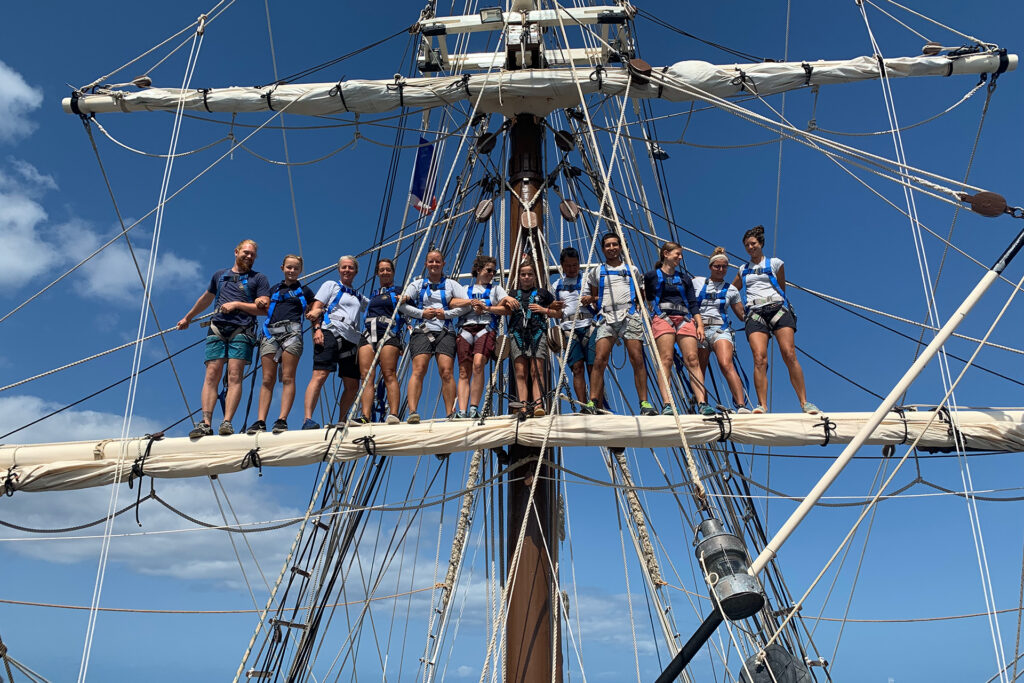Dutch maritime heritage
Sailing with Dutch traditional sailing vessels
Get to know the “Brown Fleet“, an iconic part of Dutch maritime heritage and an important, unique player within Rederij van Linschoten. The term refers to a specific category of traditional sailing ships, often built from wood, iron, or steel, originally used for transport or fishing. Today, the “Brown Fleet” is best known as a tourist attraction and is used for recreational sailing trips, such as sailing along with professionals. These ships, often large and impressive, take visitors about 100 years back in time and offer an authentic sailing experience.
The history of the Brown Fleet
The origin of the Brown Fleet lies in the 19th century and the early 20th century. During this time, the vessels were used for cargo transport. The ships in the Brown Fleet were an essential part of the Dutch economy until the rise of modern inland and freight vessels. They transported goods such as wood, grain, manure, peat, and fish to and from various ports along the Dutch and international coasts and inland waterways.
The name “Brown Fleet” comes from the brown color of the sails of many of the ships. The sails were treated (tanned) with a mixture of tar and oil to make them waterproof and stronger, resulting in the characteristic brown hue. This became a symbol of the durability and functionality of these ships.

Important features of the Brown Fleet
What makes the Brown Fleet so special is the diversity of ships within this category. There are various types of ships that belong to the fleet, including clippers, tjalks, barges, cutters, and botters. Each of these ships has its own unique design and history, but they also share common features:
Material and Construction
The ships are usually built from wood, iron, or steel, depending on the period in which they were made. Many older ships are made of wood, while later variants are constructed from riveted iron or steel.
Suitable for Shallow Water
Many ships in the Brown Fleet have a flat bottom, making them ideal for navigating shallow waters such as the Wadden Sea.
Authentic Experience
For today’s Brown Fleet, the focus is mainly on the experience. Many of the ships have been responsibly restored to preserve their historical character, while still ensuring they are comfortable, safe, and suitable for many passengers.
Tourism vs. The Brown Fleet
When motorized cargo ships entered the market in the mid-20th century, traditional sailing vessels lost their commercial function. Many of these ships would have been lost if no initiatives had been taken. In the 1960s and 1970s, the Brown Fleet was rediscovered as a tourist attraction. Since then, they have been widely used in the recreational sector.
The preservation of this fleet is of great importance for the cultural and maritime heritage of the Netherlands. Various organizations, such as the Association for the Brown Fleet and the BBZ, are dedicated to maintaining and restoring these ships so that future generations can continue to enjoy these unique sailing experiences. One way to experience this is through our sailing holiday with a skipper.

Discover the Brown Fleet at Rederij van Linschoten.
Would you like to discover our Brown Fleet? Book a sailing trip or a group sailing tour with us. It can be a fun holiday, but also an active company outing, a weekend with friends, a wedding celebration, or a trip alone or with family – we’ve got something for everyone. On our website, you can get to know some of our traditional sailing ships and tall ships from the Brown Fleet. Of course, we are also happy to advise you on this. Feel free to contact us. Together, we will find the perfect ship and sailing area for your next vacation, school trip, or other event.
